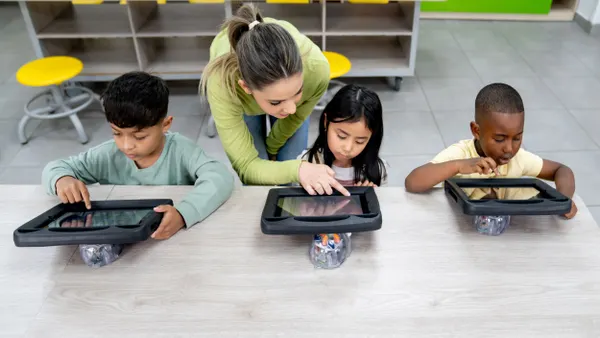Kevin Ghost is the director of technology and network administrator for the Connellsville Area School District in Pennsylvania.
Knowing that digital equity can help close the achievement gap and help prepare students for success in college and the workforce, our district has invested time and effort over the past few years into infusing uniform technology into our classrooms. Ultimately, our goal was to transform our rural district from one where teachers and students used disparate technology dry erase boards in one room, traditional projectors in another — into one that helps all students and teachers thrive in a 21st century learning environment.
Here’s how we did it:
Strive for a consistent experience across all classrooms
Previously, some of our schools had a lot of technology, and others were lacking — mainly due to funding issues. Student access to technology wasn’t really fair or equitable. Variations among the technology itself also got in the way, and included everything from interactive whiteboards to traditional projectors and dry erase boards. Keeping that equipment up and running required different maintenance strategies. We literally had to stockpile dozens of different types of projector bulbs just to ensure that teachers had them when they needed them. By replacing our existing equipment with 270 interactive flat panel displays from Boxlight Corporation, 4,400 Chromebooks and myriad other technology tools, we’ve been able to create a much more consistent learning and teaching experience.
Find creative financing solutions
We had to do quite a bit of restructuring to get all of our schools on the same level. In the early stages of the transition, we had many projects going on all at once. Because of this, funding was an ongoing issue. We looked at how we could cut our budget and reallocate some funds. Ultimately, we decided to implement an energy-savings project with national consulting firm ABM, which came in and analyzed our energy usage to see where we could save money. From there, we decided to launch a $20 million upgrade project that encompassed the classroom technology and included an overhaul of our HVAC system and lighting (i.e., an upgrade to LEDs). It’s a 15-year, loan-based project, and during that time we’ll recoup the money we used to fund the entire initiative.
Focus on 'wins,' such as better teacher collaboration
Seen as an important educational outcome, collaboration is a key skill that translates into strong team-building and teamwork (both in the educational environment and in the workforce). Knowing this, we put collaboration at the center of the technology upgrade initiative. Using their Chromebooks in conjunction with the flat panel displays, for instance, teachers can quickly turn those displays into giant, touchscreen computers that everyone use to collaborate and interact on. These “wins” have enabled high levels of teacher collaboration — something that was previously unattainable thanks to our district’s antiquated, disparate tech tools. When teachers find resources, they can quickly share them with one another, thus creating a high level of equity across the district. The collaboration now among our teachers is simply amazing.
Find modern technology platforms that play well with others
The days when software platforms and their related hardware were proprietary and “closed off” are long gone, with many modern-day offerings providing seamless integrations with other applications. Knowing the value of this, we sought out state-of-the-art platforms that would integrate well with other systems. So even though our flat-panel displays are standalone devices — and they don’t need to connect to a computer to be used — we’ve been installing Chromebits in parallel with the displays to enable a more seamless experience for teachers. We also use the web-based Nearpod platform, which includes a lot of pre-made lessons and an entire library that is aligned to state and federal guidelines. Because we chose flexible technology solutions in the first place, we’ve been able to make these adaptations and truly create an equitable environment for our entire district.





 Dive Awards
Dive Awards






